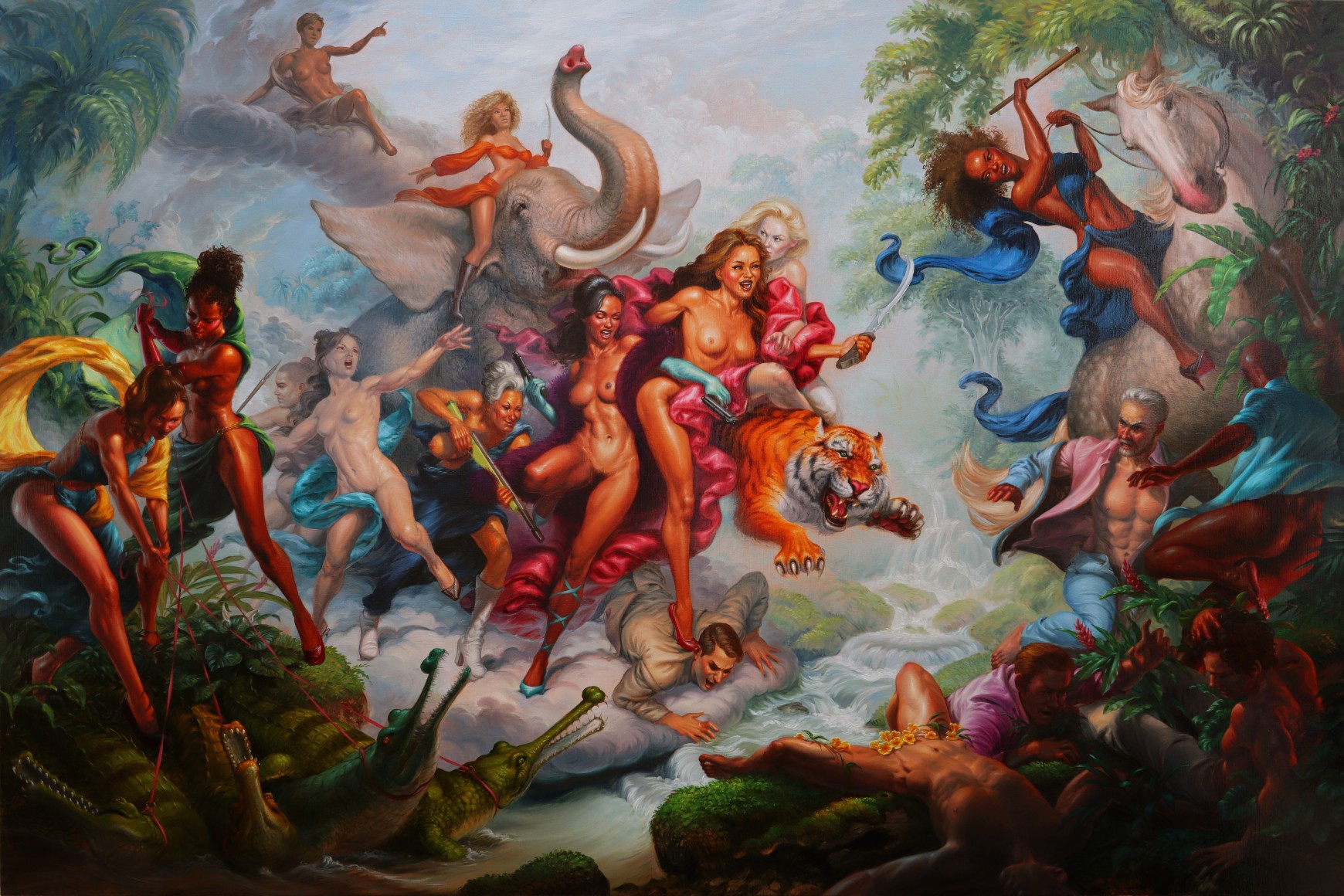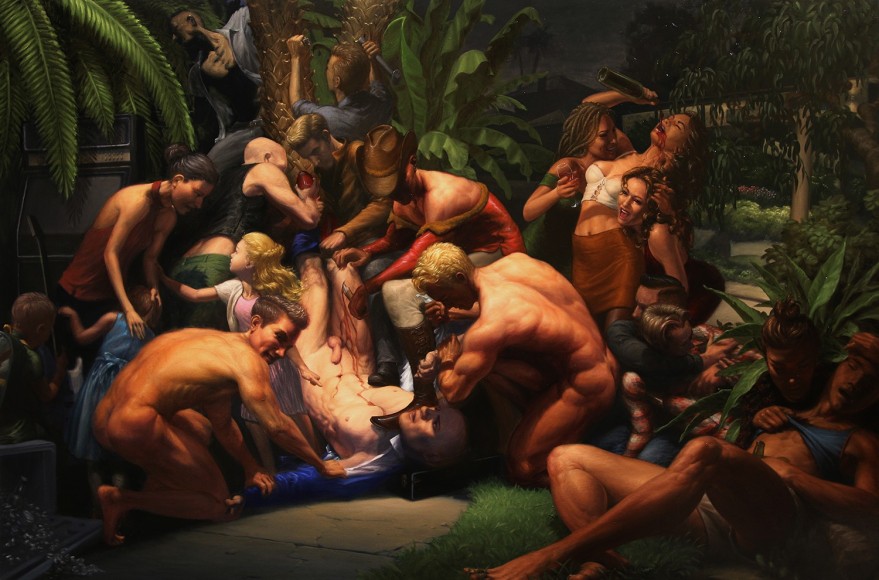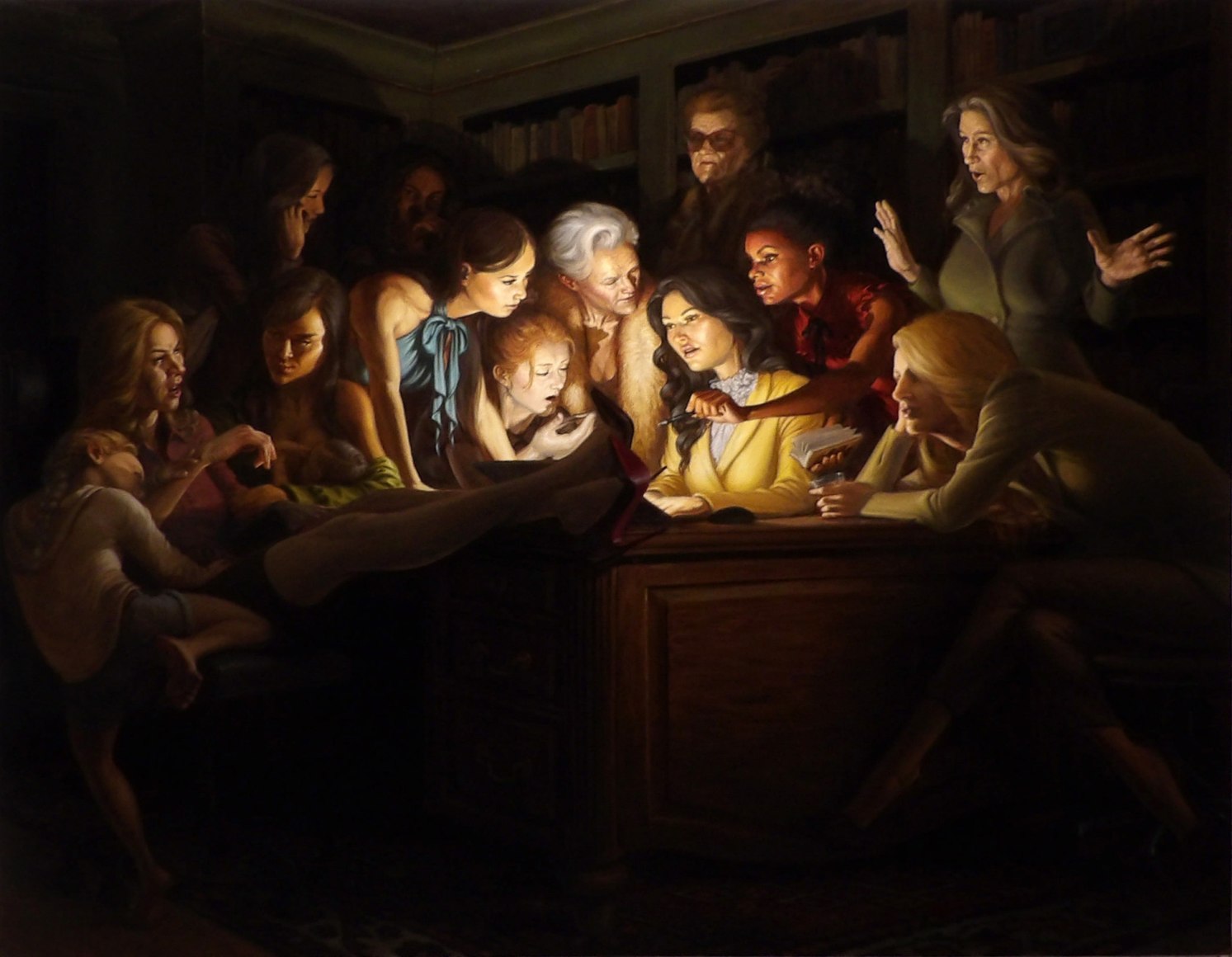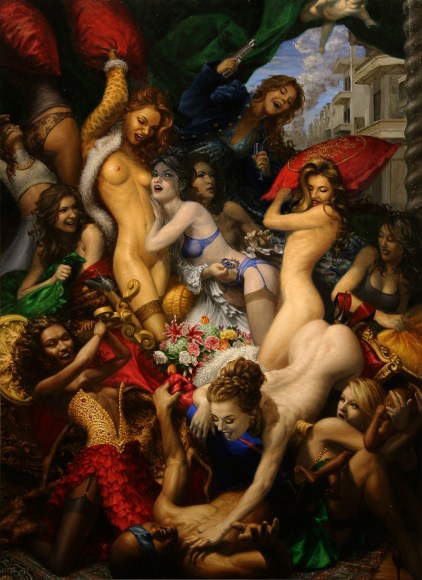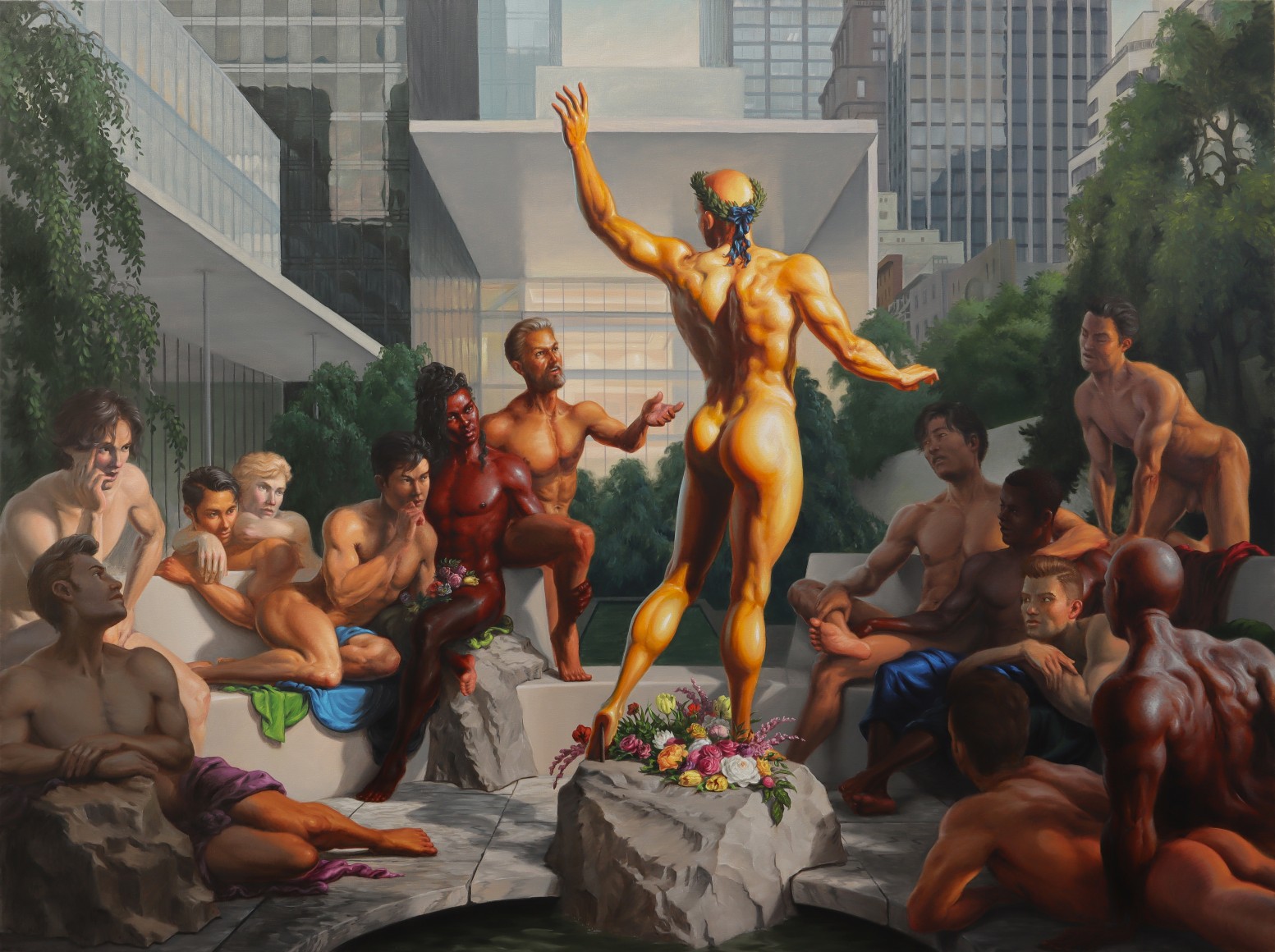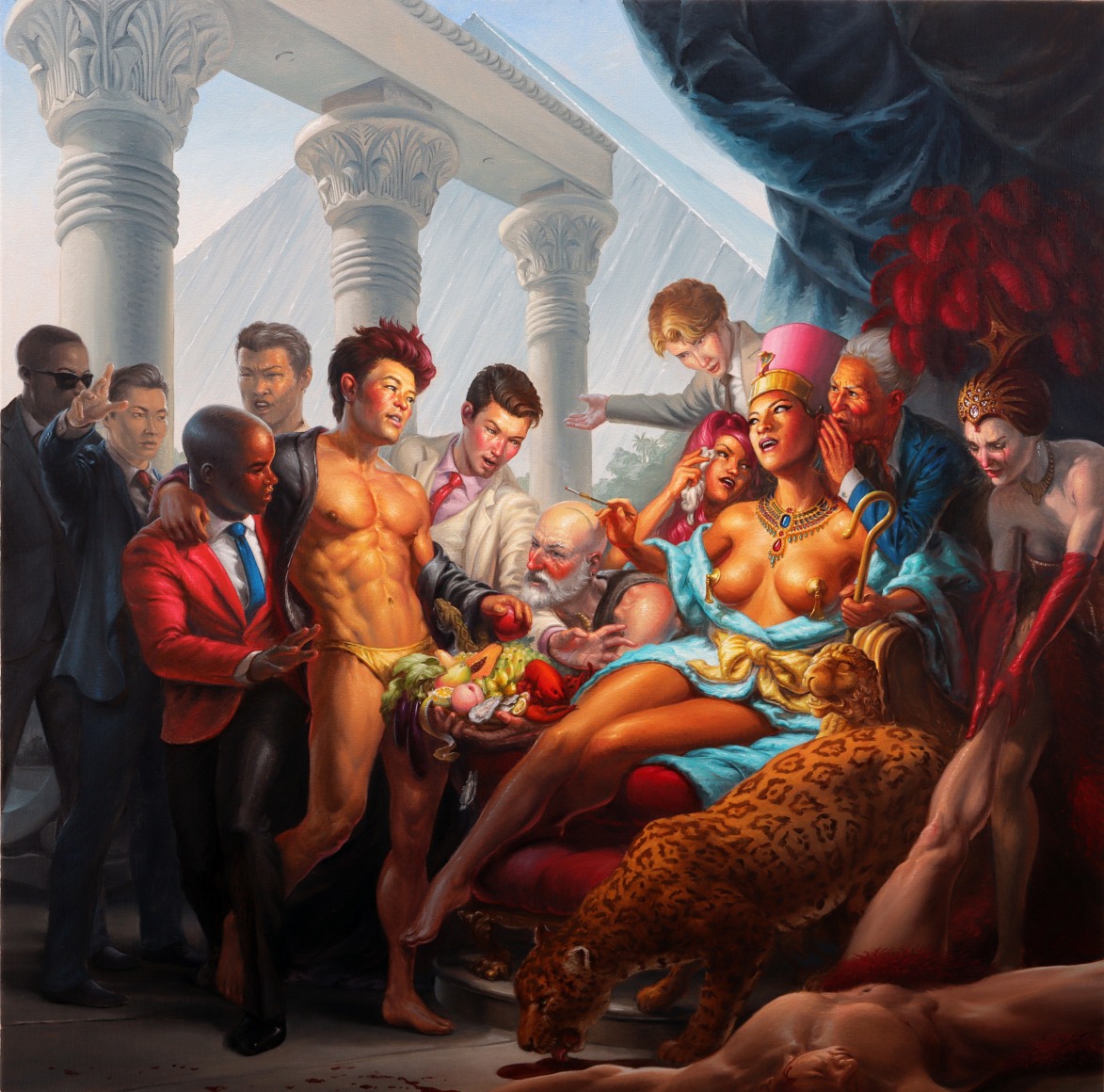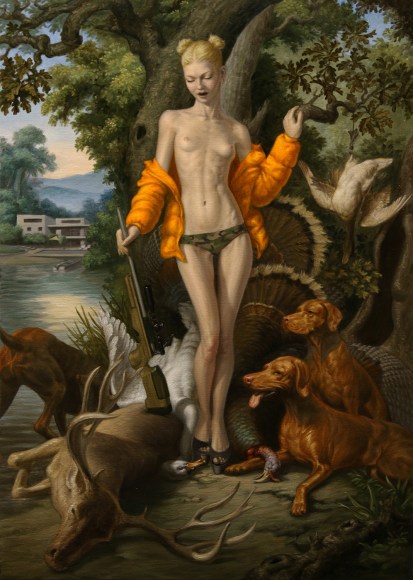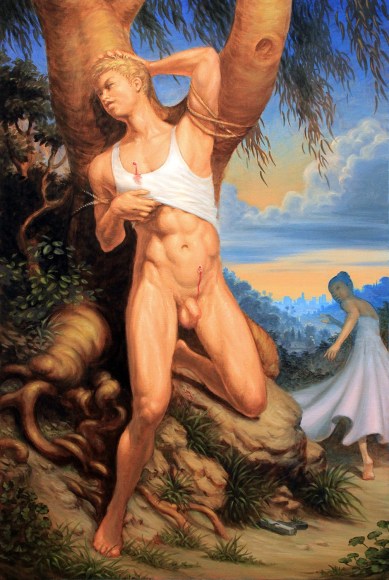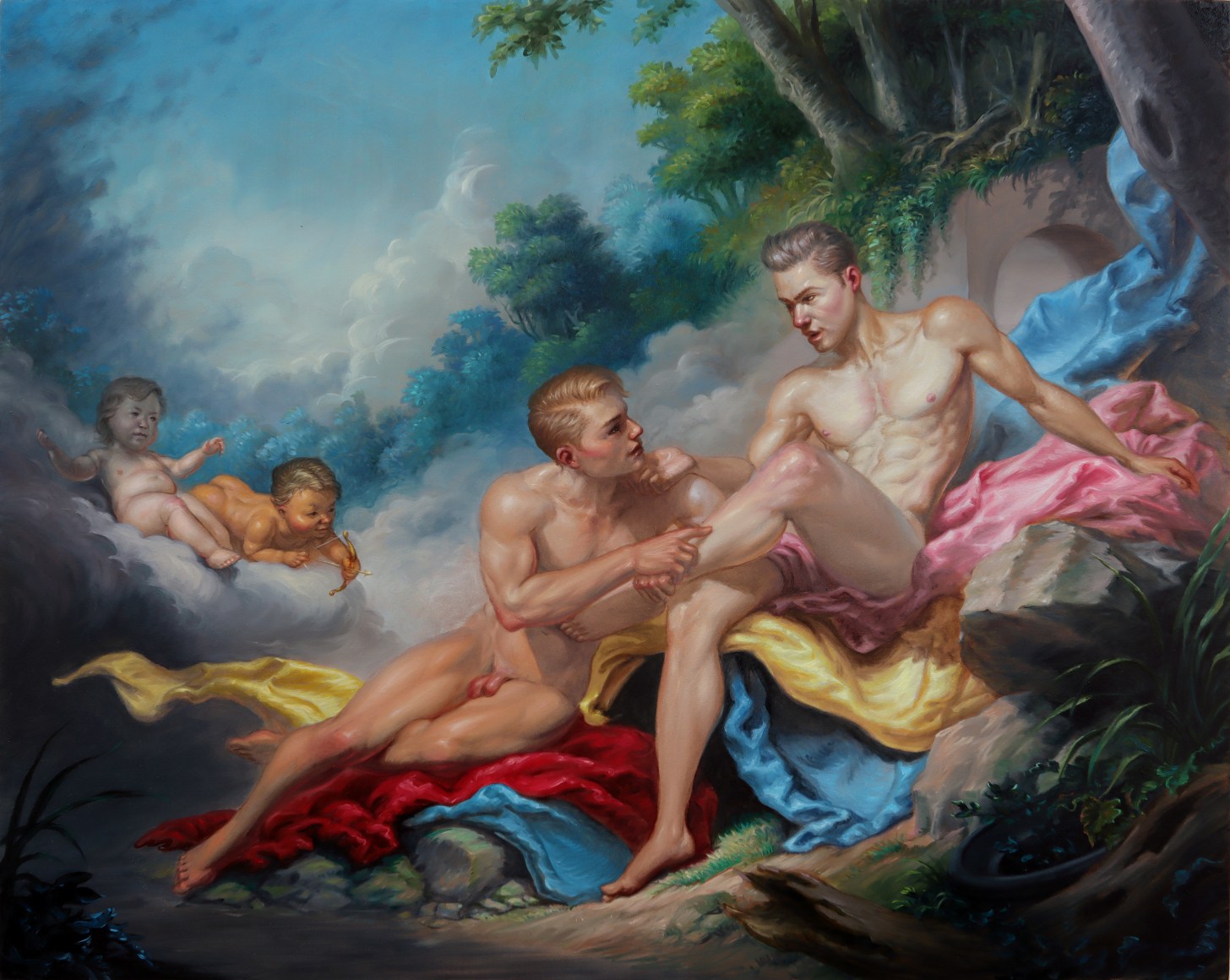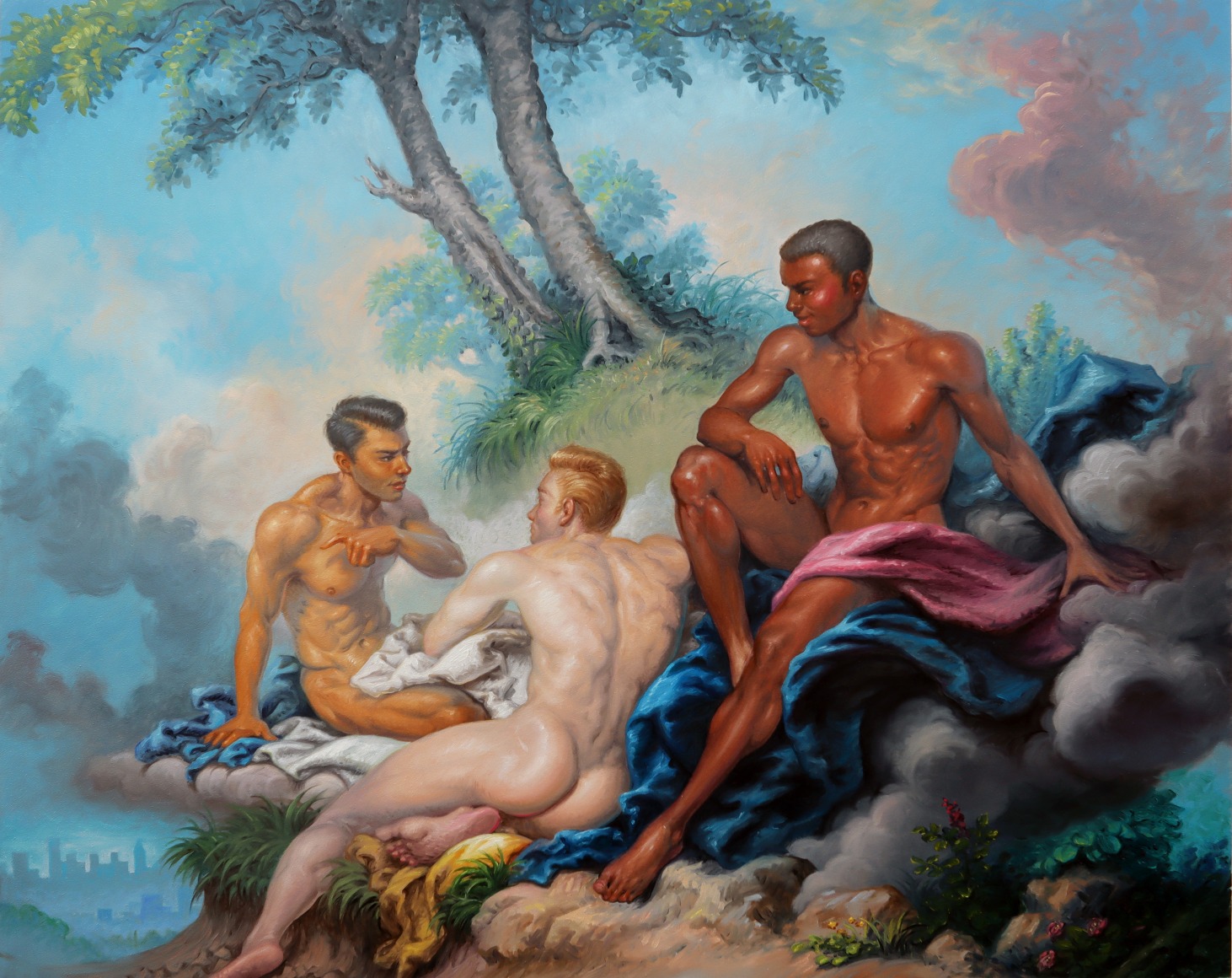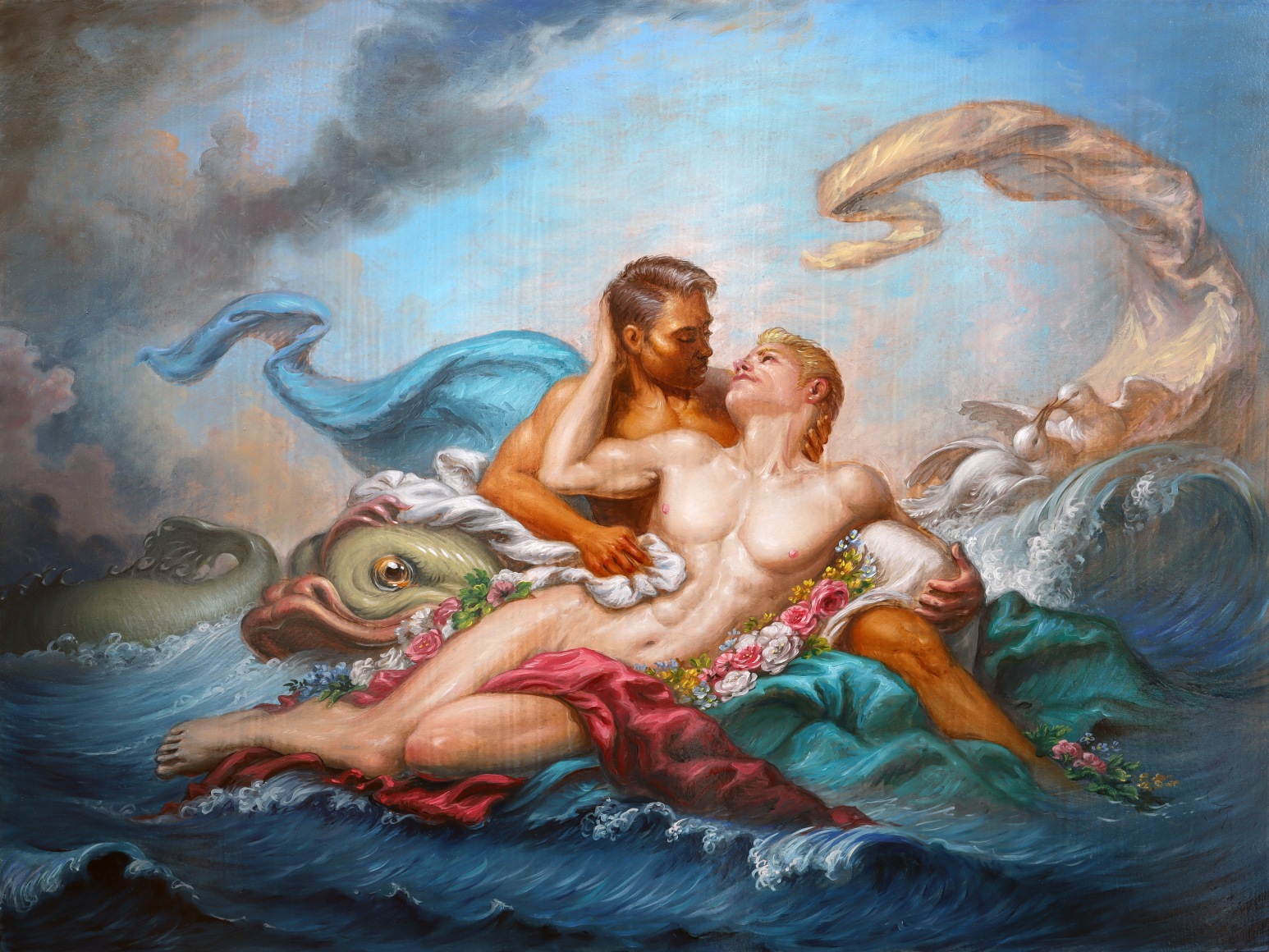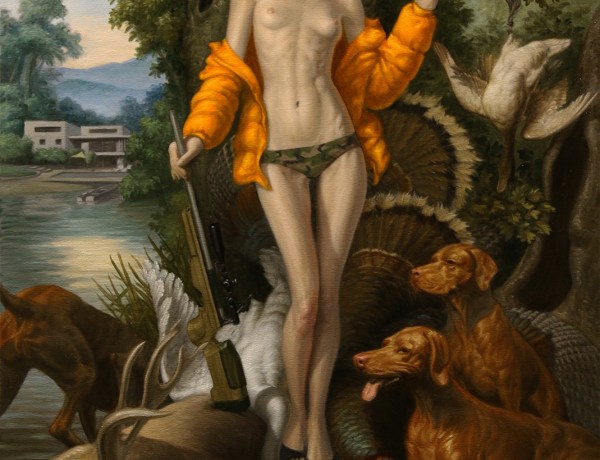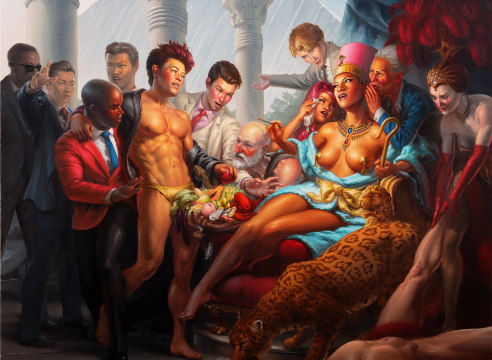
Press Release
20 October 2022 (New Orleans, LA) JONATHAN FERRARA GALLERY is proud to present the gallery premiere solo exhibition of Michael Tole entitled Revisionist Histories. Unveiling thirteen new paintings, this exhibition serves as a letter to art history, literature, and mythology. An attempt to reflect the social changes that have reshaped society over the past century, Tole explores the evolution of gender norms, power dynamics, and representation within Western visual and literary culture, negotiating aesthetic pleasure, justice, and cultural discourse on beauty.
Following his inclusion in the 25th Annual NO DEAD ARTISTS, Tole was selected as the grand prize winner of the exhibition and recipient of a solo exhibition at the gallery in 2022. Since that time, the artist has been placed in several notable collections including: 21c Museums, Keith Fox + Tom Keyes, CCH Pounder, and Thomas and Dathel Coleman. In April 2022 the artist was featured in the Art Market San Francisco art fair and will be exhibited in the forthcoming Art Miami art fair during Art Basel Miami Beach.
The artist says of this suite of new paintings…
This show borrows from a variety of art historical movements to serve as foils for contemporary issues and culture. Movies, magazines, advertising all pull from art history to achieve different effects. The Revisionist Histories collection explores what is signified by the adoption of a particular historically rooted aesthetic when applied to contemporary pop culture media and subjects. It also attempts to shake loose some of the inherited conventions of art history in order to make them more inclusive.
Some historical periods have been coded by art historians as masculine or feminine, serious or frivolous, decorative or didactic, fantasy or documentary. This coding affects how we see what we see, even if we have only passively absorbed this coding. The Revisionist Histories explore what happens when one applies a 19th century Orientalist realism to a Burning Man festival; or a 17th century Dutch mercantilist aesthetic to the home office of a COVID era business executive. Historians have long coded the Rococo movement as feminine, fantastical, and frivolous. 18th century art texts explicitly codified rules for depicting men and women. Boucher wrote that women should appear so soft that one might, “Question whether they have bones,” and should always be reclining—passive. Men must be portrayed with the skeletal structure and musculature apparent, so as to convey their virility, power, and agency—always standing, striding, tense—never recumbent. Much of this collection inverts those rigid gender roles to pose questions to history. Can men be beautiful? Can women conquer? What happens when the Gaze is turned to the male body? Lastly, my experience in an interracial marriage and raising biracial children has pushed me to invent formal devices that can more equitably treat an inclusive range of skin tones than has traditionally been present in Western art. Thus the Revisionist Histories explore how historical aesthetic conventions can be deployed, adapted, and evolved in our contemporary visual culture.
Michael Tole is a figurative painter currently living in Tempe, Arizona with his wife and two daughters. Born in 1979 in Dallas, Texas, he graduated from UT Austin with a BFA in painting in 2000. A year later, he became the youngest artist ever represented by Dallas’ Conduit Gallery where he showed for 15 years. For the first half of his career, he created photo-based paintings of retail interiors that explored issues of class, and the relationship of painting and photography. After relocating to Tempe, his work experienced a significant shift to fantastical figurative inventions based on pop culture imagery he has encountered via his two daughters’ taste in music videos, and his new proximity to the twin capitals of America’s fantasy industrial complex--Hollywood and Las Vegas. The new work attempts to contextualize their brand of Disney-esque hedonism within a broader historical view of Western visual culture. Tole’s career includes shows in New York, Los Angeles, San Francisco, Dallas, and New Orleans. He has won several grants, including the $50,000 Hunting Art Prize, and the Kimbrough Grant. His work has been reviewed in Art Forum International, San Francisco Chronicle, Dallas Morning News, and Hi-Fructose.com.
The exhibition will be on view from 26 October through 10 December 2022 with opening receptions coinciding with the Arts District of New Orleans’ (ADNO) First Saturday Gallery Openings on 5 November + 3 December from 5 - 9 pm.
For more information, press or sales inquiries please contact Gallery Director Matthew Weldon Showman at 504.343.6827 or matthew@jonathanferraragallery.com. Please join the conversation with JFG on Facebook (@JonathanFerraraGallery), Twitter (@JFerraraGallery), and Instagram (@JonathanFerraraGallery) via the hashtags: #MichaelTole, #JonathanFerraraGallery, and #ArtsDistrictNewOrleans.

